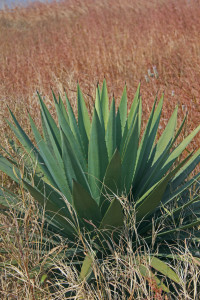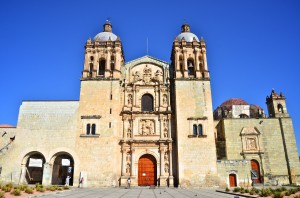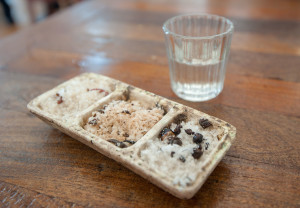Oaxacans love their mezcal, as they should. A popular saying in the region is “para todo mal, mezcal, y para todo bien también” (“For everything bad, mezcal; for everything good, the same”)
The production of products bottled as mezcal is centered around the state of Oaxaca. The state of Oaxaca is a prime growing area for the preferred base material for mezcal – a variety of agave known as agave americana, often referred to as maguey. In addition to maguey, twenty-eight other varieties of agave may be used in the production of mezcal, with the most common being agave potatorum and agave salmiana.
Mezcal derives its name from a Nahuatl Indian word, mexcalmetl, which loosely translates as “agave plant.” Mezcal often has a “smokier” or “earthier” aroma than tequila, in part because of the varieties of agave used, but also because of the tradition of cooking the piñas in earth-covered pits. Grinding methods vary, and mezcal producers commonly use agave fibers in the fermentation must to add character.
While most mezcals are produced using 100% agave, the distiller may also add various fruits and herbs to the must during the fermentation process. Thus, mezcal is produced in an almost infinite number of local variations. Mezcal may be labeled reposado or añejo, depending on the length of time it spends in cask, but many are bottled without cask aging. There is also a variant of mezcal called mezcal de olla. In this type, the must is distilled in a clay pot, called an olla, with a vapor-condensing coil attached to the cover.
While many people think they have bought or seen a bottle of tequila with a worm in it, they are mistaken, as the “worm in the bottle” is instead found only in some variations of mezcal, specifically those produced in the state of Oaxaca. The origin of the worm in the bottle is considered an old-fashioned way of certifying the strength of alcohol: if the worm decayed there was too little alcohol to preserve it; if the worm stayed intact there was sufficient alcohol for drinking.
The mezcal worm is actually the larva of one of the two moths that live on the agave plant. There are two types of worms: the red, gusano rojo, which thrives in the root of the plant, and the white or gold, gusano de oro, which is found on the leaves. Today, the worms are bred commercially for inclusion in mezcal. Although the worm is used as a marketing strategy, top-quality mezcal is generally not bottled with a worm.
The traditional way to drink mezcal is straight, sipped slowly and savored. Mezcal is sometimes accompanied by orange slices and “sal de gusano,” a Oaxacan salt blended with the ground larva of those famous gusano (worms). While it is difficult (and somewhat risky) to generalize about such things, the following flavors are often detected in mezcal: light smoke, nutty, caramel/brown sugar, floral, citrus, pumpkin, tropical fruit, dried fruit, green vegetal/celery, leathery/earthy.
As with many traditional beverages, mezcal has become part of the “craft cocktail culture,” and modern bartenders are creating smoky-yet-refreshing cocktail recipes using mezcal. Click here for a recipe, created by Scott Baird of Comal in Berkeley. Called The Palomaesque, this mezcal-based version of the classic Mexican cocktail, The Paloma, uses mezcal, grapefruit juice, lime juice, honey, and Cocchi Americano. Having just tried it myself, I can guarantee that it is delicious!


